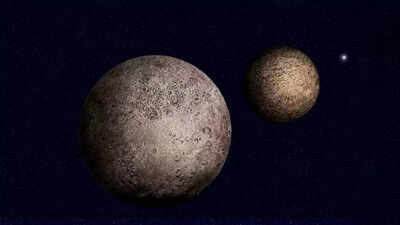Latest Education news – Board Exam Results, Admit Cards, Exam Paper Analysis and Question Papers | Times of India
A groundbreaking theory about the origins of Pluto’s largest moon, Charon, could change the way we teach about moons and planetary systems in U.S. classrooms. A new study suggests that 4.5 billion years ago, Pluto and Charon experienced a “kiss and capture” event, where the two bodies collided in a gentle, dance-like motion before becoming locked in orbit. This theory, if proven, has profound implications for the study of celestial bodies and their interactions.
New Insights Into the Pluto-Charon Relationship
For years, scientists have puzzled over how Charon, a moon that is half the size of Pluto, came to orbit the dwarf planet. Traditional theories involving debris or gravitational pull did not seem to fit the unusual size ratio between Pluto and Charon. However, the recent study published in Nature Geoscience proposes that the two bodies collided at a relatively slow speed, which allowed them to merge briefly before separating, with Charon remaining trapped in Pluto’s orbit.
As reported by The New York Times, planetary scientist Adeene Denton, who led the study, explained, “The reason that Pluto and Charon are so interesting is because Charon is 50 percent the size of Pluto. The only comparable system is Earth and its moon.” The collision theory suggests that the two bodies’ physical toughness allowed them to remain intact after the impact, a scenario that challenges previous assumptions about moon formation.
Educational Impact and Teaching Planetary Systems
The discovery of this “kiss and capture” event could lead to significant changes in how we approach teaching planetary science in schools. As the study challenges existing theories of moon formation, educators may need to update their curriculum to reflect this new model. The scenario provides a unique opportunity to teach students about the complexity of celestial dynamics and the variety of ways moons can form and be captured.
As The New York Times highlights, this research could also help students understand the broader dynamics of the Kuiper Belt, the region beyond Neptune where Pluto and Charon reside. By examining this process, students can gain a deeper understanding of how objects in space interact, evolve, and ultimately form complex systems.
#Plutos #kiss #capture #largest #moon #Charon #billion #years #change #teach #moons #planetary #systems #schools #Times #India
